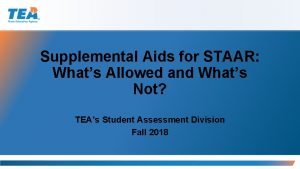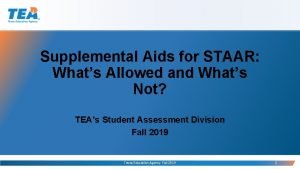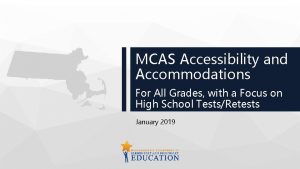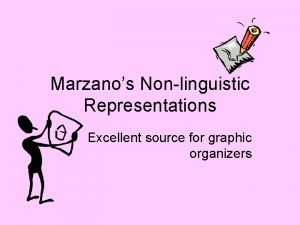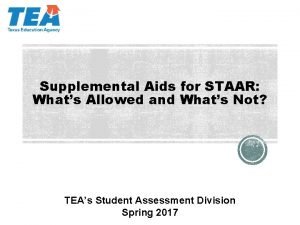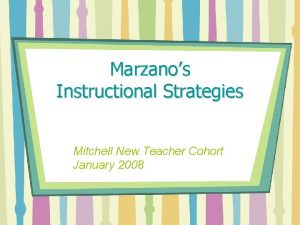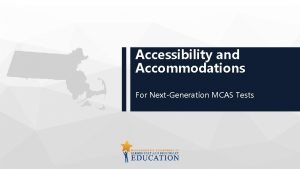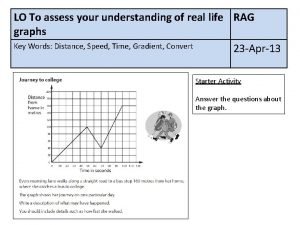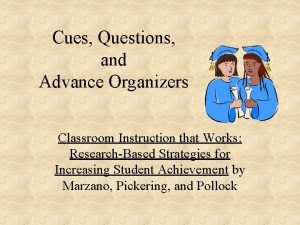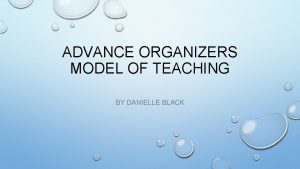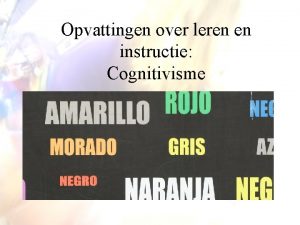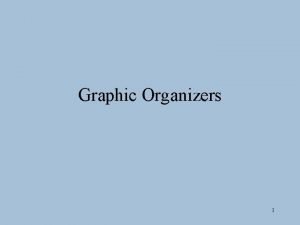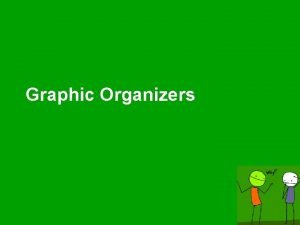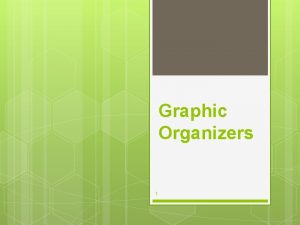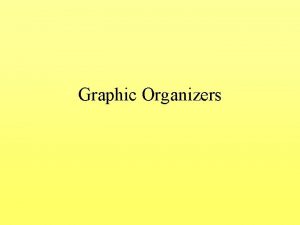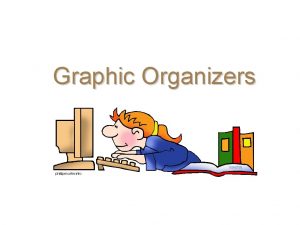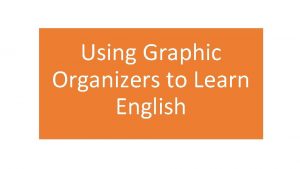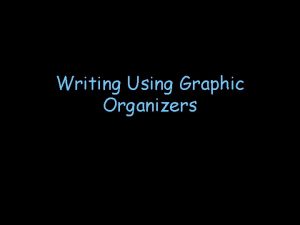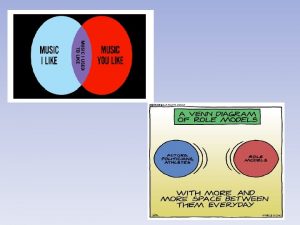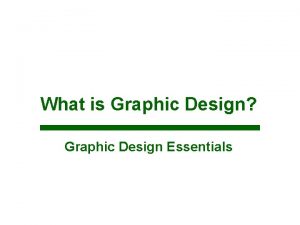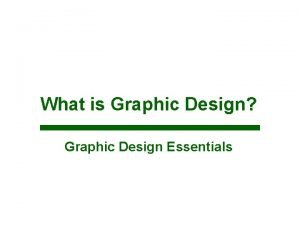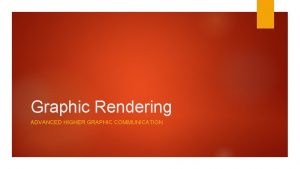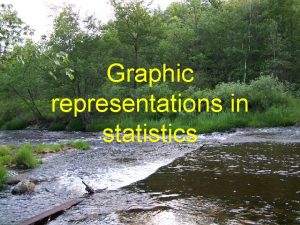Using Graphic Organizers to Assess Student Understanding Formative

















- Slides: 17

Using Graphic Organizers to Assess Student Understanding

Formative Assessment Part of the instructional process. Informs teachers and students about student understanding. Provides information needed to adjust teaching and learning to ensure students achieve standards-based learning goals.

Graphic Organizers Pictorial or graphical ways to organize information and thoughts for understanding, remembering, or writing about. Classify ideas and help communicate effectively. Can be used to: help in problem solving and decision making studying planning research brainstorming

Why GOs for Assessment? Show the order and completeness of a student's thought process. Easy to read Use short words or phrases - good for many types of learners Demonstrate authentic student knowledge Show student understanding More than copy or rewrite


Concept Maps Bubbles that contain a concept, item or question and links. Links are labeled to explain the relationship between the concepts. An arrow describes the direction of the relationship and reads like a sentence.


Vee Maps for your Classroom Roehrig, Luft, Edwards. (2001, Jan. ). Versatile vee maps. The Science Teacher. 28 -31

Vee Maps The Vee diagram has 1. A conceptual (thinking) side 2. A methodological (doing) side 3. These sides interact through the use of the focus question that relates to the events and/or objects. 4. At the point of the V are the events and/or objects that are to be observed.


Venn Diagrams Useful for comparing two things. For younger students: Colored yarn for circles and pictures. For older students: More than two circles, ideas as well as objects

Frayer Models Students provide a definition, list characteristics, and provide examples and non-examples of the concept

Definition (in own words) A change in size, shape, or state of matter Characteristics New materials are NOT formed Same matter present before and after change PHYSICAL CHANGE ( Examples (from own life) Ice melting Breaking a glass Cutting hair ) Non-Examples Burning wood Mixing baking soda with vinegar

For older students: Students analyze a word's essential and nonessential characteristics Choose examples and non-examples of the concept.

Essential Characteristics Feathers Hollow bones Warm blooded Breathe air with lungs Wings Beaks Examples Robins Meadowlarks Parrots Eagles Ostriches Penguins Non-essential Characteristics Ability to fly (BIRDS) Non-Examples Bats Flying reptiles Insects Flying squirrels

Summative Assessment A means to gauge, at a particular point in time, student learning relative to content standards How could using GOs lead to summative assessment? What sort of summative activities could you think of that would relate to GOs?

References http: //www. cybercorp. net/rhiggins/thesis/higlita 1. html http: //explorers. tsuniv. edu/vee. asp http: //www. graphic. org/ http: //www. math. uow. edu. au/people/ap_chap 2. pdf http: //www. nmsa. org/Publications/Web. Exclusive/Asses sment/tabid/1120/Default. aspx http: //www. writedesignonline. com/organizers/ Novak, J. D. & Gowin, D. B. (1984). Learning how to learn. New York: Cambridge University Press.
 Tea supplemental aids
Tea supplemental aids Blank graphic organizers for staar
Blank graphic organizers for staar Staar blank graphic organizers
Staar blank graphic organizers Organizers
Organizers Dese mcas accommodations
Dese mcas accommodations Censogram
Censogram Grammar and mechanics rules for staar 2021
Grammar and mechanics rules for staar 2021 Marzano graphic organizers
Marzano graphic organizers Mcas accommodations
Mcas accommodations Miymaths
Miymaths Distance time graph activity
Distance time graph activity Emanata graphic novel
Emanata graphic novel Ghost graphic story graphic and wayfinding
Ghost graphic story graphic and wayfinding Skimming organizer
Skimming organizer What is advance organizer
What is advance organizer Expository advance organizers examples
Expository advance organizers examples Dear organizers
Dear organizers Register and signaling vocabulary
Register and signaling vocabulary
